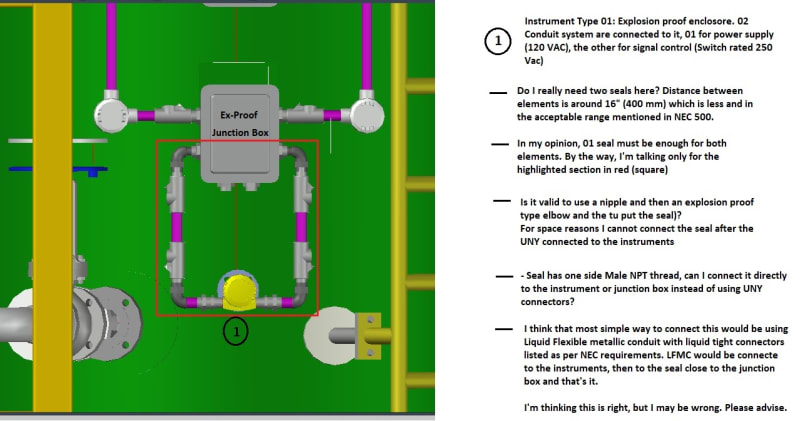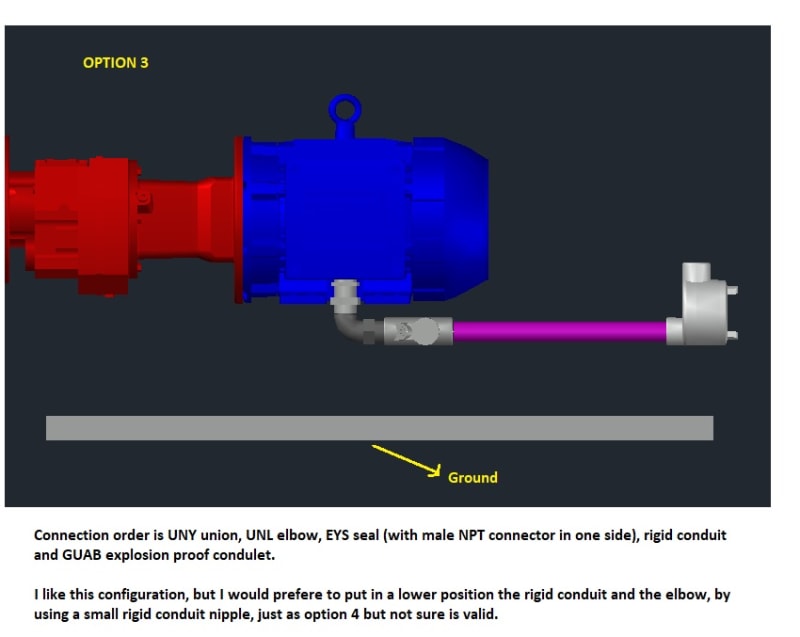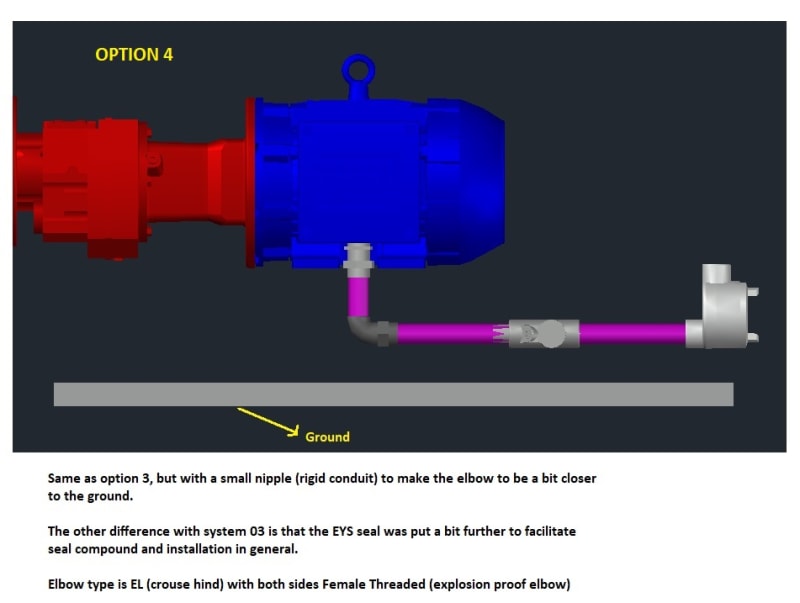trolex
Mechanical
- Aug 23, 2014
- 12
Hi Everyone,
I'm currently developing a project that includes several similar modular units with several instrumentation and pumps package.
The thing is that the electrical classification of the area where the equipment and instruments are to be installed is Class 1, Div 2, and installation must follow NEC 500 (NFPA 70) requirements.
I'm having problems identifying which conduit system may be used in the unit we are developing. In general, we have many restrictions on space, and the uses of explosion-proof fittings are quite difficult to implement based on the limited area that we have available.
Nevertheless, these are the main features of the items that we have:
- Motors are Class 1, Division 1 Rated (3 phase - 460 V)
- Instruments Type 01: Explosion-proof enclosure (120 Vac) power supply and contact switch (for signal control) contained in the instrument enclosures
- Instruments Type 02: Explosion-proof enclosure with intrinsic safety circuits-24 Vdc. Power supply/signal control comes from the same cable - loop powered).
- Instruments Type 03: Intrinsically safe circuits (NEMA 4X enclosure)-24 Vdc. Power supply/signal control comes from the same cable - loop powered).
- Junction Boxes: Explosion-Proof type NEMA 7: Inside includes some elements able to generate arcs or sparks (Instruments type 01 are connected to these elements).
Questions:
1. Can I fit EYS seals with one male NPT extreme directly in an explosion-proof enclosure (Junction Box, enclosure motor, or instruments type 02)?
2. Do I need to use "seals" for instruments type 02 and 03 that have intrinsically safe circuits?
3. Can I connect directly to the enclosure a UNL elbow type explosion-proof instead of a UNY union?

4. Can I use Liquid flexible metal conduit (LFMC) UL Listed with liquid-tight connectors (also UL listed)instead of rigid conduit?
5. Instruments type 01 need to be connected first to a Junction Box explosion-proof enclosure, do I need to use 2 seals, 01 for the entry at the junction box and the other one to be used at the entry of the instrument?

6. I have 4 possible options for the motor terminal box conduit system connection, where my favorite is number 2, I can also use options 3 and 4, option 1 is basically excluded due to space limitations. In any case, can you tell me which ones are more suitable and meets NEC codes? See pictures below.




7. When leaving Class 1 Division 2 area to an unclassified area, I understand that a seal is necessary. In my case, the boundary is exactly at the location of the cable tray system. My doubts are detailed in the attached picture.

I apologize for the long post, hopefully, some of you may help me with this misconception that I may have.
Regards
I'm currently developing a project that includes several similar modular units with several instrumentation and pumps package.
The thing is that the electrical classification of the area where the equipment and instruments are to be installed is Class 1, Div 2, and installation must follow NEC 500 (NFPA 70) requirements.
I'm having problems identifying which conduit system may be used in the unit we are developing. In general, we have many restrictions on space, and the uses of explosion-proof fittings are quite difficult to implement based on the limited area that we have available.
Nevertheless, these are the main features of the items that we have:
- Motors are Class 1, Division 1 Rated (3 phase - 460 V)
- Instruments Type 01: Explosion-proof enclosure (120 Vac) power supply and contact switch (for signal control) contained in the instrument enclosures
- Instruments Type 02: Explosion-proof enclosure with intrinsic safety circuits-24 Vdc. Power supply/signal control comes from the same cable - loop powered).
- Instruments Type 03: Intrinsically safe circuits (NEMA 4X enclosure)-24 Vdc. Power supply/signal control comes from the same cable - loop powered).
- Junction Boxes: Explosion-Proof type NEMA 7: Inside includes some elements able to generate arcs or sparks (Instruments type 01 are connected to these elements).
Questions:
1. Can I fit EYS seals with one male NPT extreme directly in an explosion-proof enclosure (Junction Box, enclosure motor, or instruments type 02)?
I cannot find anything about this, all I can find is that you need first a union Type UNY connected to the enclosure, a conduit Rigid Nipple, and then the Seal. Due to space limitations, I would like to omit the UNY union where possible and just connect the seal directly
2. Do I need to use "seals" for instruments type 02 and 03 that have intrinsically safe circuits?
3. Can I connect directly to the enclosure a UNL elbow type explosion-proof instead of a UNY union?
See reference for this in the attached picture, otherwise is basically UNL105 from eaton

4. Can I use Liquid flexible metal conduit (LFMC) UL Listed with liquid-tight connectors (also UL listed)instead of rigid conduit?
I'd like to apply this on the terminal box motor, and some instruments in general. In motors, I would prefer not to use an explosion-proof flexible conduit such as ECGJH type, since they are not very malleable and also very expensive
5. Instruments type 01 need to be connected first to a Junction Box explosion-proof enclosure, do I need to use 2 seals, 01 for the entry at the junction box and the other one to be used at the entry of the instrument?
Please have into account that the distance that separates these elements is really short and is even less than the 18" (450mm) required by NEC to install seals. See attached pictures for references

6. I have 4 possible options for the motor terminal box conduit system connection, where my favorite is number 2, I can also use options 3 and 4, option 1 is basically excluded due to space limitations. In any case, can you tell me which ones are more suitable and meets NEC codes? See pictures below.




7. When leaving Class 1 Division 2 area to an unclassified area, I understand that a seal is necessary. In my case, the boundary is exactly at the location of the cable tray system. My doubts are detailed in the attached picture.

I apologize for the long post, hopefully, some of you may help me with this misconception that I may have.
Regards
